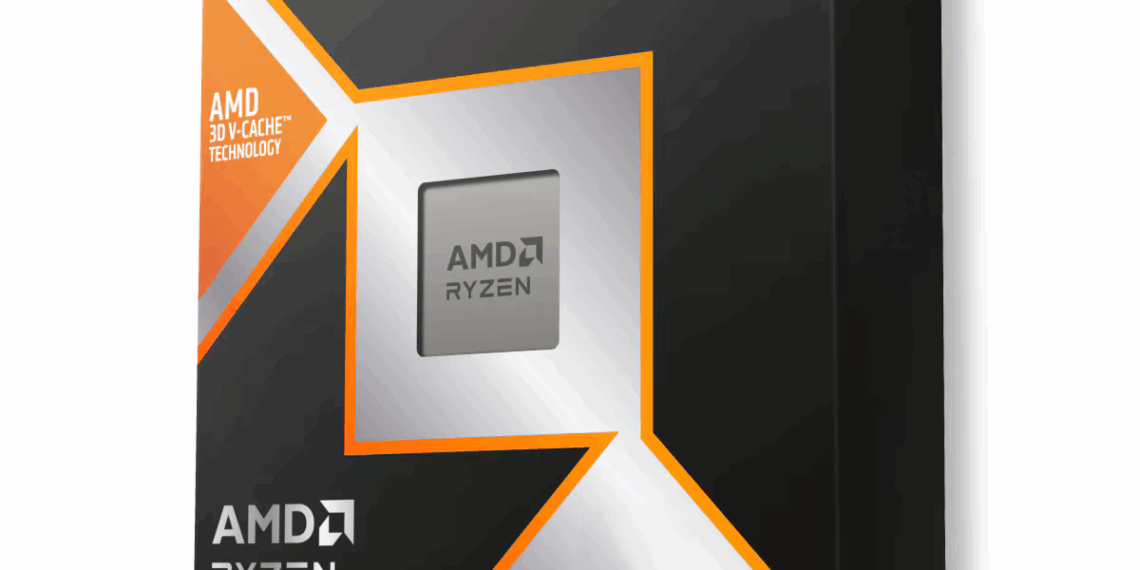AMD is reportedly developing two groundbreaking Ryzen 9000 “Zen 5” 3D V-Cache CPUs featuring dual X3D dies – marking the first retail implementation of dual 3D V-Cache technology with unprecedented cache sizes.

Table of Contents
New X3D CPU Specifications
| Model | Cores/Threads | Cache | TDP | Expected Price |
|---|---|---|---|---|
| 16-Core X3D | 16/32 | 192MB L3 | 200W | ~$799+ |
| 8-Core X3D | 8/16 | 96MB L3 | 120W | $400-$500 |
| Ryzen 9 9950X3D | 16/32 | 128MB L3 | 170W | $699 Current |
Revolutionary Dual X3D Technology
16-Core Flagship Beast
The rumored 16-core variant represents a significant leap forward, featuring 192MB of L3 cache – the highest ever on a mainstream desktop CPU. This dual X3D implementation includes:
- 64MB 3D V-Cache on both CCDs
- 32MB on-die cache per CCD
- 200W TDP for maximum performance
- Positioned above the current Ryzen 9 9950X3D
Budget-Friendly 8-Core Option
The 8-core model targets value-conscious enthusiasts with:
- 96MB total L3 cache
- 120W TDP for efficient operation
- Price range between $400-$500
- Direct competition with existing gaming CPUs

Why Dual X3D Matters Now
Previously, AMD refuted the possibility of Ryzen X3D CPUs with 3D V-Cache stacked on both dies, citing economic concerns. However, the 2nd Gen AMD V-Cache technology used in Zen 5 CPUs runs cooler, faster, and supports overclocking – potentially making dual X3D economically viable.
The new V-Cache design improvements include:
- Enhanced thermal management
- Better performance scaling
- Overclocking compatibility
- Reduced manufacturing complexity
Gaming Performance Revolution
These dual X3D CPUs could deliver unprecedented gaming performance by eliminating cache-related bottlenecks entirely. With 192MB of L3 cache, even the most demanding games and applications will have instant access to frequently used data.
Current single X3D implementations already dominate gaming benchmarks. Dual X3D technology could extend AMD’s lead significantly over Intel’s upcoming Nova Lake CPUs, which won’t arrive for several years.
Market Positioning Strategy
Premium Tier Expansion
The 16-core dual X3D creates a new ultra-enthusiast category above the $699 9950X3D, potentially priced at $799 or higher. This allows AMD to:
- Capture high-end market share
- Justify premium pricing through exclusive technology
- Maintain competitive pressure on Intel

Value Segment Strengthening
The 8-core variant fills the gap between standard Ryzen CPUs and flagship X3D models, offering enthusiast-grade cache at mainstream pricing.
Competitive Landscape
While Intel works on “Big LLC” cache technology for future generations, AMD’s immediate dual X3D launch maintains its gaming CPU dominance. The technology represents years of R&D investment finally reaching retail consumers.
These processors will appeal to:
- Competitive gamers seeking maximum frame rates
- Content creators handling large datasets
- Enthusiasts wanting cutting-edge technology
The dual X3D implementation fulfills long-standing community requests for maximum cache configurations previously seen only in engineering samples.
FAQs
When will AMD’s dual X3D Ryzen 9000 CPUs launch?
Official launch dates haven’t been announced, but development reports suggest they’re in advanced stages.
How much cache will the flagship dual X3D CPU have?
The 16-core model is expected to feature 192MB of L3 cache, the highest on any mainstream CPU.








